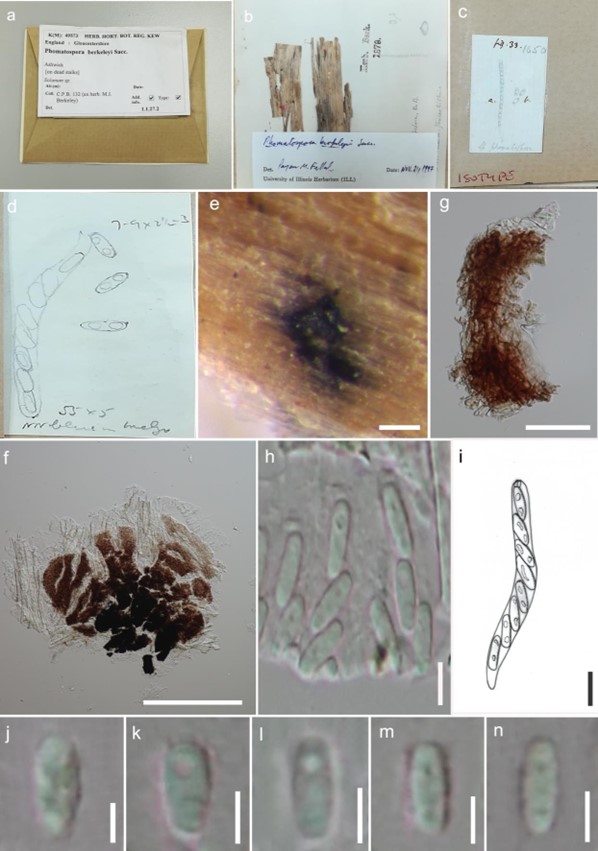Phomatospora Sacc., Nuovo G. bot. ital. 7: 306 (1875).
MycoBank number: MB 4015; Index Fungorum number: IF 4015; Facesoffungi number: FoF 02487; 72 morphological species (Species Fungorum 2020), 4 species with sequence data.
Type species – Phomatospora berkeleyi Sacc.
Notes – Phomatospora, typified by P. berkeleyi, originates from terrestrial, freshwater and marine habitats (Hyde 1993a, Raja & Shearer 2008). Ascospores of aquatic species have adaptive features such as appendages or slimy sheaths in order to facilitate entrapment of and/or adhesion to substrates (Hyde 1993a, Raja & Shearer 2008). Phomatospora berkeleyi and P. arenaria were initially observed to produce a Sporothrix asexual morph in culture, similar to some taxa in the Xylariales, which led to Phomatospora being placed in Xylariales (Rappaz 1992). Molecular analyses conducted by Lumbsch & Huhndorf (2007), however, did not support this placement and subsequently, the genus was placed in Sordariomycetes genera incertae sedis. Réblová et al. (2016a) as well as Senanayake et al. (2016) revealed through phylogenetic analyses that Phomatospora groups together with Lanspora, for which Phomatosporaceae was introduced. Phomatospora biseriata is excluded from the phylogenetic analysis conducted in the present study since it does not cluster with other species of Phomatospora. Further studies should confirm the definite identity of the species introduced as ‘Phomatospora biseriata’. Phomatospora berkeleyi is illustrated herein (Fig. 195).

Figure 195 – Phomatospora berkeleyi (Material examined – ENGLAND, Gloucestershire, dead stalks of Solanum sp., M.J. Berkeley, K(M): 49573, isotype). a-d Herbarium material. e Appearance of ascomata on host substrate. f squash mount of ascoma. g Peridium. i Ascus (redrawn from Fallah & Shearer 1998). h, j-n Ascospores. Scale bars: e, f = 100 µm, g = 20 µm, h, j-n = 3 µm, i = 10 µm.
Species
Phomatospora berkeleyi
